Ukraine: The Self-Awareness of the Sacrificial Lamb (Part 2 of 2)
Western Media Shift, Doomerism, Domestic Politics, A New Conflict Diverts America’s Focus, Preparing the Sacrifice of the Lamb, Winners and Losers
Previous Entry - Part 1
Since the previous entry was published, several key developments continue to make the outlook for Ukraine even gloomier than it already was then. The Ukrainian-held city of Avdiivka is now falling to Russian forces. This city is right next to Donetsk, the largest city in the Donbass. It is from Avdiivka that the Ukrainian Armed Forces (UAF) have been shelling that city for almost a decade now. It is considered by many to be the location with the strongest fortifications along the entire front line. Its capture by the Russians would be a significant victory, not just because of the size of the battle, but especially because it would spare the city of Donetsk from any future artillery barrages from the Ukrainian side.
Since the last entry, the ongoing fight between President Zelensky and his top general, Valeri Zaluzhny, has broken out into the open. Zelensky has indicated that he will be replacing Zaluzhny (and others) in order to “shake up” Ukraine’s war effort, a move that the general refuses to accept. The two Z’s do not see eye-to-eye, with observers informing us that Zaluzhny has called for the UAF to pull out of Avdiivka in order to buy time and not lose more men and arms in defending a city that they would lose in due time.
Making matters even worse for the Ukrainians, the US Senate failed to agree to send more money to Kiev to help them in their fight against the Russians. Ukrainian officials told the Guardian that the failure in the US Senate “….will have real consequences in terms of lives on the battlefield and Kyiv’s ability to hold off Russian forces on the frontline”. US Aid For Ukraine President Yuriy Boyechko sounded an even gloomier note:
“Everyone was hoping that US won’t let us down, and now we find ourselves at a very difficult place. People are losing hope little by little. We don’t have time for this because we see what’s going on at the front. The more time we give for the Russians to build up their stockpiles, even if the aid is going to show up it might be too little too late.”
Newly-elected Polish Premier Donald Tusk criticized Senate Republicans by invoking the memory of Ronald Reagan:
And not to be outdone, Politico is blaming who else but Donald Trump.
The EU did finally manage to convince Hungary to agree to a new 50 Billion EUR package for Ukraine, but European leaders all agree that it is “nowhere near enough”, and requires the USA to chip in just as much as a minimum to sustain the war effort. This package is to be spread out until 2027, but Ukraine faces a funding shortfall of 40 Billion USD this year alone! From the linked article:
“Everyone realizes that €50 billion is not enough,” said Johan Van Overtveldt, a Belgian conservative who chairs the European Parliament’s Budget Committee. “Europe realizes that it needs to step up its efforts.” And by that, he means finding money from elsewhere.
World Bank estimates put Ukraine’s long-term needs for reconstruction at $411 billion.
Money is one thing (and a very, very important thing at that), but all the money in the world doesn’t address the elephant in the room: Ukraine is running out of soldiers to man the front.
‘Doomerism’ Takes Hold
The overdue recognition that the much-vaunted summer offensive was a complete failure led to many of Ukraine’s most notable western cheerleaders to publicly express their pessimism. French philosopher and all-around shit-disturber Bernard-Henri Levy on his fears for Ukraine:
“Unthinkable. A defeat of #Ukraine, and a victory for #Putin, would be, for America and the West, a moral, political and strategic suicide. It’s not only values. It’s national interest.”
Anne Applebaum reacting to the White House informing the public that the Ukraine is running out of shells:
“The scale of what could be a catastrophic self-inflicted defeat for the US and its allies around the world is hard to comprehend.”
Chess legend Garry Kasparov went ahead and accused President Biden of preparing a betrayal:
“The stage continues to be set for what I warned against a year ago, the Biden admin crying poverty to withhold aid and force Ukraine in an unholy partition. That was the deal with the devil that led to this expanded war and it would happen again.”
Former Zelensky advisor Alexei Arestovich concluded that Ukraine “bet on the wrong side” by siding with the USA.
Germany’s Die Welt asked the following question two months ago: “Has Kyiv already lost?” Lee Hockstader opined in the Washington Post that the “risk is not stalemate, it’s defeat.” The New York Times reported on the UAF engaging in a pointless “suicide mission” along the Dnieper River:
For two months, Ukraine’s Marine Corps has been spearheading an assault across the Dnipro River in the southern region of Kherson to recapture territory from Russian troops. The operation is Ukraine’s latest attempt in its flagging counteroffensive to breach Russian defenses in the south and turn the tide of the war.
Soldiers and marines who have taken part in the river crossings described the offensive as brutalizing and futile, as waves of Ukrainian troops have been struck down on the river banks or in the water, even before they reach the other side.
………
Several soldiers and marines spoke to journalists out of concern about the high casualties and what they said were overly optimistic accounts from officials about the progress of the offensive.
The Kyiv Independent went on to call this river-crossing effort “hopeless” two days later.
The elite Ukrainian 47th Mechanized Brigade in Avdiivka was complaining about a lack of ammunition two months ago, just as they were being surrounded by encroaching Russian forces:
The Ukrainian Army’s elite 47th Mechanised Brigade stationed in the town of Avdiivka in the disputed Donetsk region has been surrounded and forced to contend with growing ammunition shortages, according to multiple reports from Ukrainian and Western sources. British reports indicate that the brigade was meant to attack a Russian column before it linked up with assault infantry on the northern flank of Avdievka, but failed to do so due to a lack of ammunition. The brigade’s efforts to stop the advance of Russian forces in Avdievka were described by The Times as “desperate,” fuelling perceptions of an “inevitable collapse” of Ukrainian positions, and diminished hope of preventing a Russian victory by the beginning of the New Year holidays. The brigade’s elite status in the Ukrainian Army is reflected by its deployment of some of the country’s newest military equipment, with its tank battalion operating Leopard 2A6s while its mechanised infantry battalions use newly refurbished American Bradley fighting vehicles - and its 1st Self-Propelled Artillery Battalion American M109 howitzers. Leopard 2s and Bradleys have taken heavy losses since the initiation of a failed months long offensive by Ukrainian forces against Russian positions in early June, forcing many analysts to revise prior presumptions of their survivability.
Lack of ammunition, lack of manpower, the disappointment expressed by Ukrainian forces regarding the performance of western-supplied arms, tanks, vehicles, etc., a lack of financing to continue the war effort, and a split between the country’s President and top general have enveloped Ukraine and its western backers in a cloud of doom and gloom.
What now for Ukraine?
Western media turned on a dime and concluded that the maximalist goals for this war (the military defeat of Russia in Ukraine foremost among them) was no longer achievable. Up until this point, western media and western cheerleaders were still putting on a brave face and supporting Zelensky’s stated goal of liberating all Russian-occupied territory. The acknowledgement that this overarching goal is no longer realistic finally brought to the fore the mismatch in war aims between Ukraine and its western backers.
Neo-conservative/liberal interventionist maximalism died somewhere in a minefield in Zaporizhzhia this past summer. For the Americans, this indicated that the Ukrainians could not liberate all of their territory and that it was time to wrap this conflict up for the time being (so as to activate at some later point). They had already achieved many of their goals, and the law of diminishing returns was about to set in. A key indicator of this was when NBC News reported that American and European officials were pushing Ukraine to the negotiating table:
U.S. and European officials have begun quietly talking to the Ukrainian government about what possible peace negotiations with Russia might entail to end the war, according to one current senior U.S. official and one former senior U.S. official familiar with the discussions.
The conversations have included very broad outlines of what Ukraine might need to give up to reach a deal, the officials said. Some of the talks, which officials described as delicate, took place last month during a meeting of representatives from more than 50 nations supporting Ukraine, including NATO members, known as the Ukraine Defense Contact Group, the officials said.
The discussions are an acknowledgment of the dynamics militarily on the ground in Ukraine and politically in the U.S. and Europe, officials said.
They began amid concerns among U.S. and European officials that the war has reached a stalemate and about the ability to continue providing aid to Ukraine, officials said. Biden administration officials also are worried that Ukraine is running out of forces, while Russia has a seemingly endless supply, officials said. Ukraine is also struggling with recruiting and has recently seen public protests about some of President Volodymyr Zelenskyy’s open-ended conscription requirements.
“Delicate” means that these Americans and Europeans told the Ukrainians that they are going to be forced to cede land that they had held prior to the outbreak of this war in February of 2022. They are going to end up with less territory than they began with, which is the opposite of the stated war aims of Zelensky and his government.
“..an acknowledgement of the dynamics militarily on the ground in Ukraine” means that Ukraine cannot win this war militarily despite western cheerleaders urging them to continue fighting, and holding out the hope that they could defeat the Russians.
This effort by the Americans and the Europeans to push the Ukrainians towards a negotiated end to the fighting once again highlights the mismatch in war aims between these groups. Naturally, Ukraine gets the short end of the stick because it has to give up the most in order to end the conflict. What then does Ukraine get out of this war? We’ll turn to this question a bit later in this essay.
Facing battlefield realities and trouble with its sponsors, Ukraine is now forced to go on the defensive and wait for some miracle to happen in the future to change its declining fortunes. Zelensky cheerleader Christopher Miller on the UAF’s new strategy:
As the second anniversary of Russia’s all-out invasion nears on February 24, Ukraine’s military prospects appear to be dimming. It has abandoned hopes of a swift victory and is instead girding itself for a drawn-out war. One western official working on Ukraine policy believes there is “little prospect of an operational breakthrough by either side in 2024” let alone in the next few months.
This reality has been acknowledged in Kyiv, where President Volodymyr Zelenskyy declared in early December that “a new phase” has set in. After his troops failed to recapture large areas of the south as planned, he ordered the army to build new fortifications along key segments of its 1,000km front line, signalling a shift from an offensive to a defensive posture.
The western official says that a strategy of “active defence” — holding defensive lines but probing for weak spots to exploit coupled with long-range air strikes — would allow Ukraine to “build out its forces” this year and prepare for 2025, when a counteroffensive would have a better chance.
This report is still far too optimistic regarding Ukraine’s abilities. First of all, where would the men come from for this proposed 2025 counteroffensive? Secondly, it underestimates the ability of Russian forces to achieve a breakthrough this year.
Miller does address the manpower issue:
More crucially, the country is now facing a mobilisation challenge.
Zelenskyy’s army chiefs have asked him to conscript upwards of 500,000 new soldiers, a figure that takes into account Ukraine’s staggering losses and the fact that many troops have fought for nearly two years without rest. But the president has said he needs to hear “more arguments” to support the move, while also worrying about making an unpopular decision when his own poll numbers are falling.
Echoing a growing fear among ordinary Ukrainians that the outcome of the war may not go in their favour, Kazarin said: “We enter this winter with an apparently smaller reserve of psychological resilience — and with an apparently greater collective fatigue.”
The nation’s worries are not entirely misplaced. Right now, it is Russian forces who are on the offensive.
Even if 500,000 new soldiers could be mobilized, the UAF’s officer corps have been decimated, and these newly-mobilized troops would require training, lest they end up as cannon fodder for the Russians. Even mobilization carries quite a few problems all its own, as per this Washington Post report.
Continuing from the previous link, ‘hopium’:
That aligns with the strategy that Washington is reportedly selling to Ukraine. The Americans are also pushing for a more conservative approach. Instead of ground offensives, the focus would be to hold the territory it has now, entrenching positions and beefing up supplies and forces over the coming months.
In the meantime, according to the US view, Ukrainian troops could continue to look for weak spots in Russian defences to exploit when the opportunity arises. Equally, Ukraine could carry on with — and possibly step up — the long-range air attacks with missiles and drones that have proved successful in strikes on Russia’s Black Sea Fleet in Crimea and airfields there, for example.
This is where the report gets wild:
There are others in Kyiv who worry that relying only on a defensive strategy would be detrimental to Ukraine’s war effort. Focusing on containment with no offensive component would be “a mistake of historic proportions”, warns Andriy Zagorodnyuk, a former defence minister of Ukraine. Without it, Putin “will be projecting around the world that the war is unwinnable for Ukraine”, he says. “It basically just hands him the initiative.” For that reason, Zagorodnyuk adds, keeping Russia on its toes is essential.
Budanov, the military intelligence chief, agrees that it is important for Ukraine to continue pressing Russian forces, particularly in Crimea through its air campaign, sea drone attacks and covert operations. “Our units repeatedly entered Crimea [last year],” he says, vowing to send more commandos to the peninsula to disrupt Russian logistics.
Budanov is the man favoured to replace Zaluzhny. The logic appears to be that without taking the fight to the Russians, the Ukrainians will be stuck on the defensive, and that it will sap support in the West for them. This is actually correct, but is very divorced from the reality of present capabilities.
More hopium, this time from the Wall Street Journal:
If Ukraine and its allies can work through their current adversities and continue delivering supplies to troops, an emerging best-case scenario among Western strategists is that next year becomes a year of rebuilding for Kyiv’s military. The hope would be that a limited number of Ukrainian soldiers can hold Russian forces at bay, allowing NATO countries time to train fresh Ukrainian troops, expand armament production and restock Ukraine’s arsenals.
Another hope expressed at the recent NATO meeting was that Russia’s attempts to break Ukrainian defenses fail, eroding its resources—both manpower and ammunition—and potentially offering Ukraine better prospects to retake the battlefield initiative in the spring of 2025, if it gets through next year.
Even though German Chancellor Olaf Scholz has committed to boosting the production of artillery shells to send to Ukraine, the UAF is still grossly outmatched by the Russians and their production capabilities and rising inventories. Hunkering down in their trenches for the whole of 2024 means that the UAF will continue to be ground into dust in this war of attrition, one in which they are not evenly matched with their opponent.
None of this even begins to address the fact that Ukraine takes second place to Israel in the hearts of Americans, whether elite or not. The Hamas raids that took place on October 7, 2023 immediately changed the calculus for Ukraine and its main backer, the USA. This was evidenced by the USA re-routing much-needed artillery shells meant for Ukraine to Israel instead. Ukraine’s main ally and sponsor now had its attention diverted as well, with its capabilities stretched out a bit wider than previously. No longer was Zelensky the darling in US Congress, especially with a GOP tired of giving him a blank cheque with no oversight on spending.1
The Americans and “Re-Defining Success”
Almost all of you have heard me say that the USA won this conflict on the first day. I still hold to this position, and will explain why a bit further down in this essay. Suffice it to say for now that achieving a strategic victory on day one meant that everything else that came after was gravy, and that the plug could be pulled on this proxy war when the law of diminishing returns began to set in.
That law has begun to put its feet up on the couch, which is why American foreign policy planners and those in the US foreign policy community have moved away from the unachievable maximalist goals that were considered within reach up until the failure of the summer counteroffensive, and are now settling on goals that are not as ambitious.
In January of last year, the RAND Corporation published a policy paper urging the USA to not allow for a long war, as it would not serve American interests. Here is the conclusion:
The debate in Washington and other Western capitals over the future of the Russia-Ukraine war privileges the issue of territorial control. Hawkish voices argue for using increased military assistance to facilitate the Ukrainian military's reconquest of the entirety of the country's territory.[71] Their opponents urge the United States to adopt the pre-February 2022 line of control as the objective, citing the escalation risks of pushing further.[72] Secretary of State Antony Blinken has stated that the goal of U.S. policy is to enable Ukraine "to take back territory that's been seized from it since February 24."[73]
Our analysis suggests that this debate is too narrowly focused on one dimension of the war's trajectory. Territorial control, although immensely important to Ukraine, is not the most important dimension of the war's future for the United States.
“Territorial control, although immensely important to Ukraine, is not the most important dimension of the war’s future for the United States.”
Recall that this was published a year ago, during the heyday of western optimism regarding Ukraine’s chances to defeat the Russians on their own soil. RAND is very influential in US policy circles, and they were already advising the Biden regime to not focus on Ukraine recapturing occupied territory. Once again, the mis-match in war aims between DC and Kiev is visible for all to see.
We conclude that, in addition to averting possible escalation to a Russia-NATO war or Russian nuclear use, avoiding a long war is also a higher priority for the United States than facilitating significantly more Ukrainian territorial control.
“We got what we wanted, screw the Ukes.”
Furthermore, the U.S. ability to micromanage where the line is ultimately drawn is highly constrained since the U.S. military is not directly involved in the fighting. Enabling Ukraine's territorial control is also far from the only instrument available to the United States to affect the trajectory of the war. We have highlighted several other tools—potentially more potent ones—that Washington can use to steer the war toward a trajectory that better promotes U.S. interests. Whereas the United States cannot determine the territorial outcome of the war directly, it will have direct control over these policies.
Ukraine as a sacrificial lamb for the USA’s wider objectives.
…………….
A dramatic, overnight shift in U.S. policy is politically impossible—both domestically and with allies—and would be unwise in any case. But developing these instruments now and socializing them with Ukraine and with U.S. allies might help catalyze the eventual start of a process that could bring this war to a negotiated end in a time frame that would serve U.S. interests. The alternative is a long war that poses major challenges for the United States, Ukraine, and the rest of the world.
Option 1: Ukrainian victory over Russian forces (unrealistic)
Option 2: Negotiated settlement where Ukraine must cede more land to Russia (probable)
Critics might attack me and say that RAND doesn’t make policy. Okay, but check out this essay that appeared in November in Foreign Affairs from two foreign policy heavyweights: Richard Haass and Charles Kupchan. Foreign Affairs is published by the Council on Foreign Relations and has historically been VERY influential when it comes to US foreign policy. In this essay, both Haass and Kupchan argue that “success” when it comes to Ukraine needs to be “re-defined” via a new strategy that “balances means and ends”.
The concession:
Such a reassessment reveals an uncomfortable truth: namely, that Ukraine and the West are on an unsustainable trajectory, one characterized by a glaring mismatch between ends and the available means. Kyiv’s war aims—the expulsion of Russian forces from Ukrainian land and the full restoration of its territorial integrity, including Crimea—remain legally and politically unassailable. But strategically they are out of reach, certainly for the near future and quite possibly beyond.
The proposal:
The time has come for Washington to lead efforts to forge a new policy that sets attainable goals and brings means and ends into alignment. The United States should begin consultations with Ukraine and its European partners on a strategy centered on Ukraine’s readiness to negotiate a cease-fire with Russia and to simultaneously switch its military emphasis from offense to defense. Kyiv would not give up on restoring territorial integrity or holding Russia economically and legally accountable for its aggression, but it would acknowledge that its near-term priorities need to shift from attempting to liberate more territory to defending and repairing the more than 80 percent of the country that is still under its control.
This means a freezing of the conflict that is to be re-ignited a future date. More importantly, it means rejecting Ukraine’s war aims in favour of American ones.
Conceding the point regarding Russia:
Time will not be on Ukraine’s side if a high-intensity war drags on indefinitely. Russia’s economy and its defense industrial base are on a war footing. Moscow is also importing arms from North Korea and Iran and has access to consumer items that contain technology that it can repurpose for military uses. Should Russia need to reinforce its military presence in Ukraine, it has a large pool of manpower on which to draw. Russia has also found new markets for its energy, while sanctions have had only a modest effect on the Russian economy. Putin appears politically secure and in control of the levers of power, from the military and security services to the media and public narrative.
Ukraine:
Meanwhile, in Ukraine, soldiers and civilians alike continue to lose their lives in significant numbers, the military is burning through its weapons stocks, and the economy has shrunk by about one-third (although it is beginning to show signs of growth). Among Ukraine’s Western supporters, Ukraine fatigue is starting to take a toll on their readiness to keep up the flow of support to Kyiv.
The USA needs to refocus elsewhere (East Asia):
The United States is stretched thin as it supports two partners engaged in hot wars. Defense analysts are already pronouncing the nation’s defense strategy to be “insolvent,” as a recent RAND study put it; others argue that the United States should be devoting its attention and resources to strategic challenges in the Indo-Pacific.
Prepping the lamb for the final sacrifice:
It will not be politically easy for either Ukraine or the West to confront these sobering strategic realities. But it is far preferable for both Kyiv and its supporters to embrace a new strategy that puts ends and means back into balance than to continue pursuing a course that has led to a dead end—and which could, before long, bring about a sharp decline in Western support for Ukraine.
The USA has achieved as much as it can with its proxy war in Ukraine, and it now needs to freeze that conflict in order to focus on other areas of interest; the Middle East and especially East Asia, where the “Pivot to Asia” (that was supposed to occur under President Obama) is still waiting to take place. The Americans are trying to assign responsibility for Ukraine to the EU in anticipation of the conflict winding down. The Europeans are to oversee the sacrificial slaughter of the Ukrainian lamb.
Winners and Losers
At the beginning of this war, I said that:
“The USA will be the big winner, Russia the small winner, the EU will be a small loser, and Ukraine will be the big loser.”
I think that this prediction has held up pretty well.
There are many commentators who are jumping the gun, thinking that Ukraine has already lost the war, and by extension, the USA too. There are two problems with this:
As of this moment, the flag of the USA (via proxy forces) still flies to the east of Kharkov
a Ukrainian loss does not equate to an American one (I will explain below)
Big Winner: USA
Ukraine has long been the most important prize in Russia’s “near abroad” for US foreign policy planners. It took two decades to do, but the Americans managed to create a ‘win-win’ situation for themselves in that they boxed Russia into a corner by 2015. A pro-US regime in Kiev seeking membership in NATO was firmly established by 2015 after a previous attempt (Orange Revolution) failed to do so. As Ukraine is an existential matter for Russia2, its absorption into NATO (whether de facto or de jure) is simply not tolerable from a security standpoint. Russia was left with two options:
do nothing and allow NATO to set up shop in Ukraine, allowing the USA/NATO to achieve “nuclear primacy”, and cut Russia off from the Black Sea and Europe
invade Ukraine and be divorced economically and politically from Europe, invite powerful political, economic, and cultural sanctions regimes, be forced to turn towards Asia
Either option is a win for the USA, as the Americans are not concerned with Ukraine’s territorial integrity. Also, the Americans can live with a rump Ukrainian state that is not a part of NATO. The Russian invasion of Ukraine achieved the following for the Americans:
split Russia from Europe politically, economically, and culturally
capture of Ukrainian resources, particularly agriculture
forced Europe to re-direct its economy towards the USA, or US-friendly states
reduced Russia’s export market options
decreased European manufacturing competitiveness
invited relocation of European manufacturing from Europe to the USA
destruction of Nordstream, resulting in European market opening up for US LNG exports
expansion of NATO to Finland and Sweden, thus making the Baltic Sea a “NATO lake”
ended French hopes of European “strategic autonomy”, relegating Europe to an American protectorate
no American losses of life, over 100,000 Russians dead3
finally pulled Ukraine (whatever will be left of it) out of Russia’s orbit
What the Americans failed to do (we do not count maximalist goals, as they were never realistic in the first place):
Russia was not isolated globally in terms of politics, economics, and culture
the sanctions regime did not destroy the Russian economy (quite the opposite!) nor even the Ruble
despite Prigozhin’s gambit, the Russian state was never seriously in danger of collapsing
get all NATO members to spend at least 2% of their GDP on military purchases
offload management/funding of conflict onto the EU
The Americans did not run the table, but they did really, really well. Only one thing can threaten this going forward (which I will explain shortly).
Small Winner: Russia
There is a saying in western circles that Putin somehow always plays a good hand with a lousy deck. I think that this is a fair assessment. What has Russia achieved in this war?
the degradation of Ukraine’s military capabilities through a war of attrition
a land bridge from Donbass to Crimea, thus securing the latter
a future neutral Ukraine that cannot join NATO4, but will have security guarantees
a shot in the arm to BRICS due to non-Western states seeing the need to collaborate to fend off a highly-aggressive USA
a new, supercharged economy with import substitution, new and field-tested military technology, and newly-established trade routes to the south and east
avoid a collapse of the Ruble
an alliance with China out of mutual fear of US designs on both of them
a boost in national self-confidence after an initial military stumble
Russia has failed to achieve the following:
regime change in Kiev
an outright military victory against Ukraine
seize the rest of Donbass, all of Kharkov, Kherson (city), and Odessa
split the EU politically (Hungary by itself has been unable to do this)
save the Armenians of Nagorno-Karabakh5
Although well-placed now for an outright military victory, this has not happened to date. Being cut off from Europe also forces Russia to be too reliant on Asia, and China in particular. All exporters want access to as many foreign markets as possible, and Europe has long been Russia’s favourite one. That is now done. Let’s not forget that Russia’s early military stumbles also harmed its reputation, damaging its global prestige. Lastly, Russia traded Ukraine for Sweden’s and Finland’s entries into NATO.6
Small Loser: The EU
It’s incredibly difficult to think of anything that the EU has gained in this conflict other than Finland and Sweden joining NATO, an organization that is part of the Euro-Atlantic structure. Poland has seen some economic benefits from being the USA’s pit bull, but that’s really about all there is. Could we consider access to cheap Ukrainian labour a benefit? The “sense of unity” displayed by European politicians in the first 18 months of this war is very shallow, with the European public not at all on the same page regarding belligerence towards Moscow.
This war has seen the EU:
reject strategic autonomy in favour of being relegated to the status of an American protectorate
suffer the loss of cheap and reliable Russian oil and gas
experience significantly increased costs with respect to energy supply
lose access to the Russian market for its exports
lose overall competitiveness globally for its own manufacturing exports
experience de-industrialization in certain areas as manufacturers move off-shore to remain competitive
suffer protests by Polish farmers in particular due to cheap Ukrainian foodstuffs imports
Europe is in serious danger of experiencing de-industrialization. A more imminent danger is the USA assigning the EU of managing and financing the last stages of the war in Ukraine.
Big Loser: Ukraine
Unlike the EU (where benefits from the war are practically non-existent), Ukraine has actually managed to achieve a few things in this brutal war:
national pride and determination on display thanks to its spirited defense of its soil
the liberation of occupied Kharkov, Kherson, Kiev, Chernigov, and Sumy
a newly-generated national unity that strengthens the Ukrainian identity, separating it further from that of Russia
a final break with Russia politically, economically, socially, and culturally in whatever remains of the country
The losses are monumental, which is what makes Ukraine the obvious ‘big loser’ in this conflict. As of today, Ukraine has experienced:
significant territorial loss
at least 150,000 dead UAF7
obliteration of the UAF officer corps
economic destruction
mass flight of its citizens abroad, creating conditions for a downward population spiral
destruction of cities, countryside, infrastructure, etc.
the hope that it can ever evict Russia from its territory
chances for NATO membership
and so much more
These losses are made all the more tragic with the knowledge that Kiev and Moscow were making substantial progress in the spring of 2022 regarding a ceasefire and peace plan. Zelensky and company gambled it all on the advice of people like then-UK Prime Minister Boris Johnson, only to see that bet go bad.
This is how the conflict stands right now, at least according to my analysis. The Chinese are winners too, by the simple fact that the USA’s attention has been focused in large part on this conflict for two years now. Beijing has learned quite a bit regarding the tools that the USA and its allies have deployed against Moscow, ranging from military to economic. India is a winner too because it got to play economic middleman between Russia and Europe, on a much larger scale than Turkey or the Central Asian Stans.
I am certain that when this war does end, my classification of winners and losers will remain the same. The only threat to it that I can envision is the following: a complete collapse of the UAF that allows the Russians to seize Kiev and move across the Dnieper towards Vinnitsa and Zhitomyr. This would change my calculus, as such a chain of events would result in not just an overwhelming Russian strategic military victory, but would also negatively impact the USA’s standing globally, because such a catastrophe would be viewed as the USA being an unreliable ally (more than it is at present), shaking NATO to its very core.
Ukraine’s notorious corruption is seeing more western reporting these days, as the screws are being put to Zelensky for various reasons, including as a way to get him to the negotiating table
Recall Brzezinski and Obama from the first installment in this two-part series
very rough estimate
unless in a situation where Ukraine is severely reduced to holding just the far west of the country i.e. Galicia and Volhynia
they were sold out by their brothers in Armenia Proper, but it is still a loss of prestige for Moscow
Russia wasn’t in a position to prevent either country’s NATO accession, but it is still a loss
very rough estimate




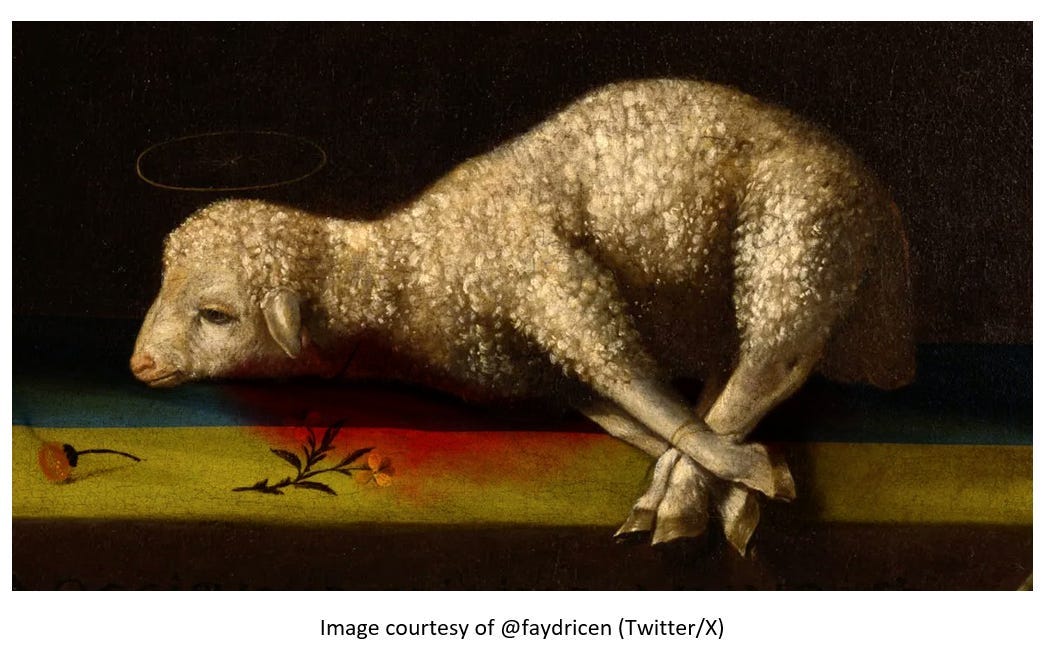


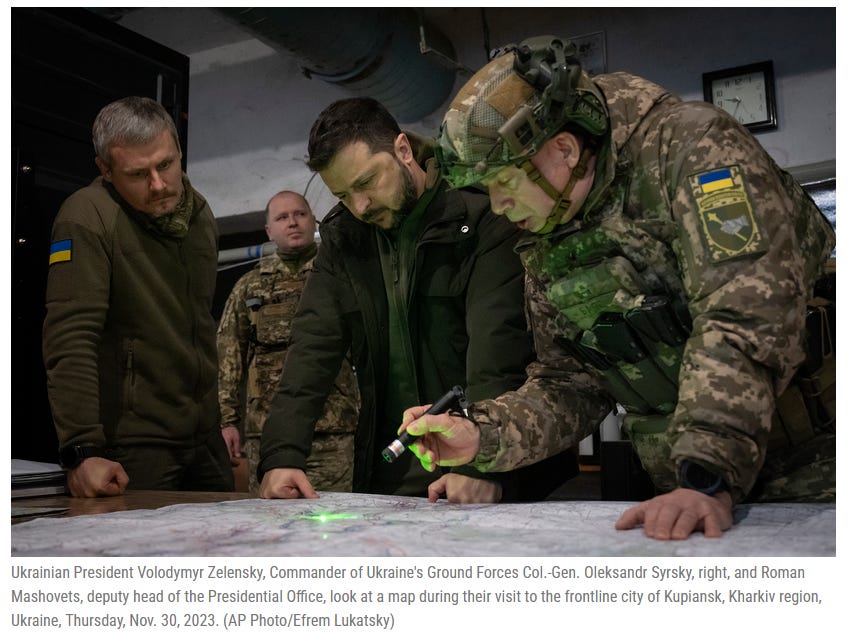
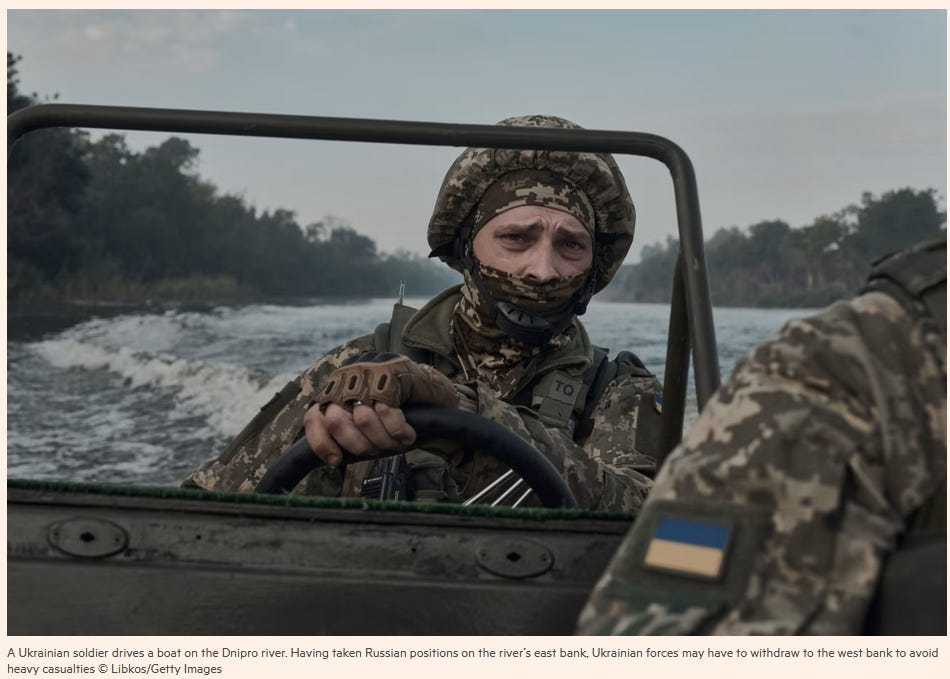

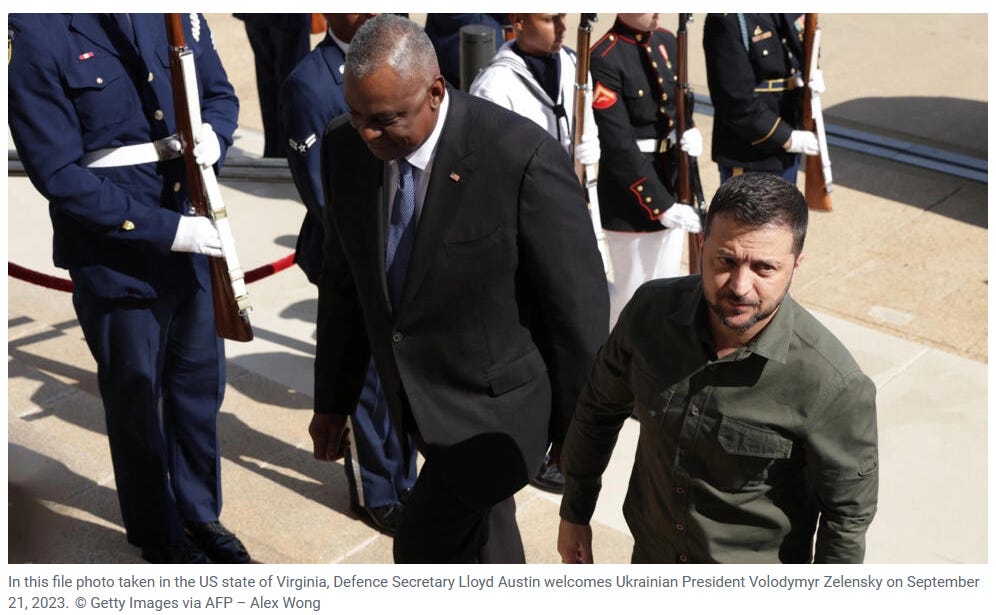
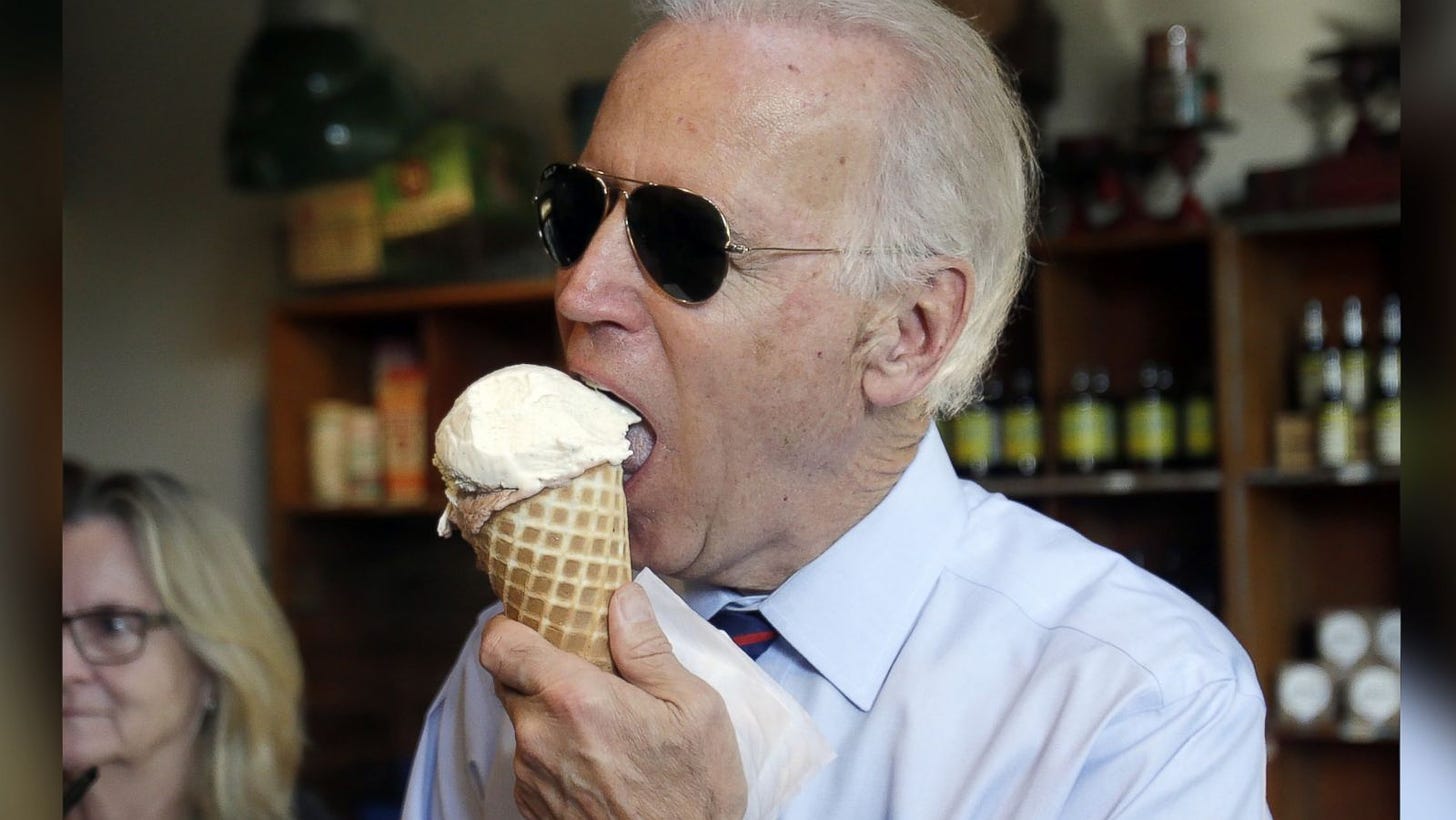
Hit the like button at the top or bottom of the page to like this entry. Use the share and/or re-stack buttons to share this across social media. Leave a comment if the mood strikes you to do so.
This ends the two part series on a subject that many of you have asked me to write about, in order to see where I stand on this conflict in its current phase.
I hope you enjoy it! Lots of research and effort went into this two-parter.
And please do me the favour of spreading this series around. Send it to everyone who you think might enjoy it.
"The only threat to it that I can envision is the following: a complete collapse of the UAF that allows the Russians to seize Kiev and move across the Dnieper towards Vinnitsa and Zhitomyr. This would change my calculus, as such a chain of events would result in not just an overwhelming Russian strategic military victory, but would also negatively impact the USA’s standing globally, because such a catastrophe would be viewed as the USA being an unreliable ally (more than it is at present), shaking NATO to its very core."
This outcome is far more likely than you give credit. There's little question the Russians can achieve it if they want and from what they've been saying -- and the reality that if they don't take Kiev/Odessa and at least up to the Dniepr they will surely be fighting a new Ukrainian army within 5 years -- it will happen once they are ready to move forward which could be as soon as this coming summer. I predict Russia can live with nothing less than total capitulation and capture of Ukraine with the exception of the far western regions, which will likely be absorbed by Poland, Romania, etc. once Russia completes its objectives. This will be a total disaster for the US and once and for all put to bed the notion that NATO is anything but a fake and impotent force.
I've been wrong before but I think this time such an outcome is inevitable.